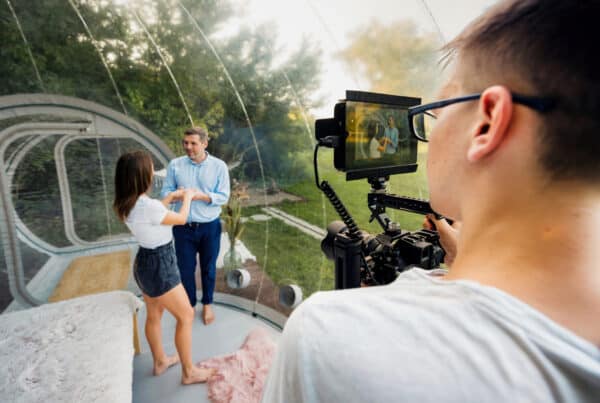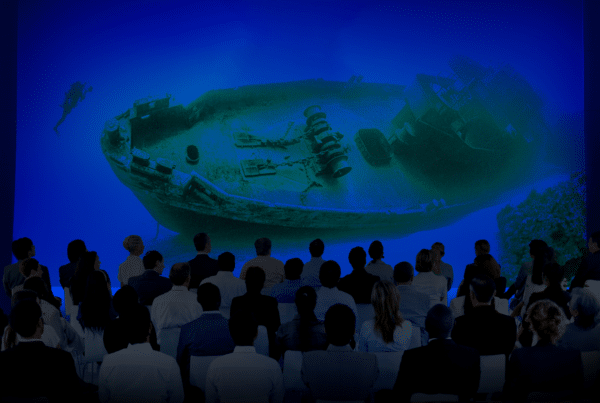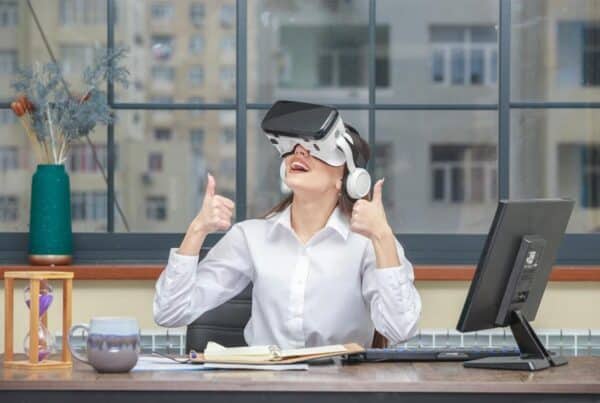
In an era where virtual experiences are continually reshaping how we engage with the world around us, fulldome technology stands out as a groundbreaking innovation that takes immersive storytelling to the next level. Imagine stepping into a digital realm where you can explore distant galaxies, historical landmarks, or intricate architectural wonders—all without leaving the comfort of your home. Fulldome technology, originally developed for planetariums, enables users to experience 360-degree virtual tours that captivate the senses and spark curiosity. This technology not only enhances educational experiences but also transforms marketing and tourism by providing a stunningly realistic view of environments that were once inaccessible. In this blog post, we will delve into the fascinating world of fulldome technology, examine its impact on virtual tours, and uncover how it is revolutionizing the way we explore new horizons. Join us on this journey as we explore the limitless possibilities of immersive experiences that engage, educate, and inspire!
Introduction to Fulldome Technology
Fulldome technology is transforming immersive experiences, introducing a captivating, 360-degree panoramic environment that goes beyond traditional screens to fully surround and engage audiences. Initially developed for planetariums to showcase stunning celestial displays, fulldome setups create dome-shaped projections that make viewers feel part of the scene rather than mere spectators.
This technology has now broadened its reach, impacting fields like education, entertainment, and marketing. With high-resolution visuals, dynamic soundscapes, and interactive elements, fulldome experiences are not just visually striking but deeply engaging. Whether it’s exploring the cosmos, walking through historical sites, or showcasing products, fulldome offers a revolutionary approach to engagement.
As we explore fulldome technology’s features and benefits, we’ll uncover its potential to redefine virtual tours and enhance marketing strategies, promising a future where immersive experiences become central to how we explore, learn, and interact. Join us to see how fulldome is paving the way for a new era of exploration.
How Fulldome Technology Works
Fulldome technology beautifully merges art and science, crafting immersive experiences that engage audiences far beyond traditional media. Central to this innovation is a specialized projection system that envelops viewers in a 360-degree visual landscape. High-resolution projectors are strategically positioned around a dome-shaped screen, allowing images and videos to wrap seamlessly around the viewer and create an all-encompassing narrative.
The true magic of fulldome technology is its ability to engage multiple senses at once. Unlike flat-screen experiences, fulldome environments integrate soundscapes that complement the visuals, enhancing the immersive atmosphere. Advanced audio systems enhance this sensation of presence, making viewers feel as though they are part of the scene.
Sophisticated software stitches high-definition images and videos into cohesive 360-degree presentations, ranging from breathtaking landscapes to intricate designs. As demand for immersive experiences grows, fulldome technology is transforming education, tourism, marketing, and entertainment, paving the way for inspiring and unforgettable 360 virtual tours.
Applications of Fulldome Technology in Various Sectors
Fulldome technology is transforming various sectors by offering immersive 360-degree experiences that change how we interact with information and environments. This innovative technology extends far beyond traditional planetarium shows, finding applications in education, healthcare, marketing, and entertainment.
In education, fulldome technology creates dynamic learning environments that engage students like never before. Imagine exploring the solar system or historical events in vivid detail while sitting in a spherical dome. This immersive approach enhances comprehension and ignites enthusiasm for subjects that may otherwise seem dull.
In healthcare, professionals use fulldome experiences for training and education, allowing them to visualize complex anatomical structures and surgical procedures in ways traditional methods cannot. This simulation of real-life scenarios improves skill refinement and patient outcomes.
In marketing, businesses are leveraging fulldome technology to craft captivating brand experiences. Interactive virtual tours in a dome format engage potential customers, enhancing retention rates.
The entertainment industry also benefits, with fulldome theaters becoming popular for immersive films and concerts, creating a shared community experience. As fulldome technology evolves, its expanding applications promise to enhance learning, healing, promotion, and entertainment, forever changing how we interact with the world around us.
Challenges and Limitations of Fulldome Technology
Fulldome technology offers exciting possibilities for immersive experiences, but it also comes with significant challenges and limitations. A primary hurdle is the considerable investment required for high-quality equipment and software. Fulldome projectors and dome setups can be prohibitively expensive, particularly for smaller businesses or organizations seeking to adopt this technology. Additionally, installing a dedicated dome theater often requires more space than traditional viewing setups, complicating the logistics of implementation.
Content creation poses another challenge. Producing high-quality 360-degree visuals and audio that fully utilize fulldome technology necessitates specialized skills and expertise, leading to increased production costs and time. Not all existing media can be easily adapted to the fulldome format, and the need for continuous updates and fresh content can strain resources, especially for institutions reliant on dynamic exhibits to attract repeat visitors.
User experience is critical as well. While the immersive nature of fulldome experiences is captivating, it may not be suitable for all audiences. Some viewers might experience discomfort or disorientation in a fully immersive environment, presenting accessibility issues.
Moreover, keeping up with rapid technological advancements requires ongoing investment in upgrades to remain competitive and meet audience expectations. By understanding and addressing these challenges, organizations can better leverage the transformative power of fulldome technology to deliver unforgettable 360 virtual tours that transport audiences into new horizons.
Experience the future of 360 virtual tours with fulldome technology! Create immersive, panoramic experiences that captivate and engage audiences. Perfect for planetariums, museums, and interactive exhibits. Contact us today to learn how fulldome technology can elevate your virtual storytelling and bring your vision to life like never before!




